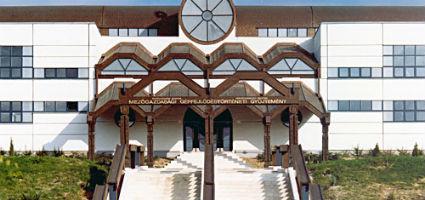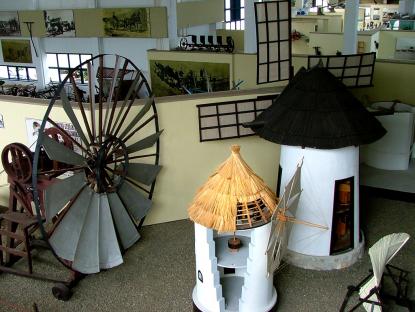2024. November 26. Tuesday
St. Stefan University Agricultural Tool and Machine Development Museum - Gödöllő
 |
Address: 2103, Gödöllő Páter Károly utca 1.
Phone number: (28) 410-210, (28) 522-000 /1050
E-mail: muzeum@gepmuzeum.szie.hu
Opening hours: Mon-Fri 9-16, Sat 9-14
|
Museum tickets, service costs:
|
Ticket for adults
|
800 HUF
|
|
|
Ticket for students
|
400 HUF
|
|
|
Ticket for pensioners
|
400 HUF
|
|
|
Ticket for families
|
2000 HUF
|
/ family
|
|
Guide
|
5000 HUF
|
|
|
Photography
|
1500 HUF
|
|
|
Video
|
2500 HUF
|
Producing food always took up considerable effort in history. In the past centuries it was hard work to do so. Man recognized early on that food production is confined by human power. Utilizing wind and water was a milestone in the history of the development of agriculture.

The history of the development of the technique of energy gained from wind and water is also the history of recycling energy. Man first used wind in sails so that he did not have to raw any more. Sails later appeared in the forms of wind wheels that moved the millstones. The first ones were in use in the first millennia BC.
The Swedish researcher Sven Hedin reported on the Wind Power Machine and reconstructed one made in the second-first millennia BC. It was used to watering. The one with a horizontal axle that eventually was widely used all over the world followed. That in Hungary it is used in agriculture is proved by the many windmills in the country.
Utilizing water energy in agriculture and in transport is the most obvious. the energy in water is used in two ways: by way of motion (rivers etc.), or potential energy (when water is pouring from a higher place to a lower).
It is very probable that ancient men knew the energy gained from water too. We know of a boat used from around 4000 BC, as well as shafts made from wood, papyrus and leather. Windmills are also used for making food and driving several other simple machines.

The history of the development of the technique of energy gained from wind and water is also the history of recycling energy. Man first used wind in sails so that he did not have to raw any more. Sails later appeared in the forms of wind wheels that moved the millstones. The first ones were in use in the first millennia BC.
The Swedish researcher Sven Hedin reported on the Wind Power Machine and reconstructed one made in the second-first millennia BC. It was used to watering. The one with a horizontal axle that eventually was widely used all over the world followed. That in Hungary it is used in agriculture is proved by the many windmills in the country.
Utilizing water energy in agriculture and in transport is the most obvious. the energy in water is used in two ways: by way of motion (rivers etc.), or potential energy (when water is pouring from a higher place to a lower).
It is very probable that ancient men knew the energy gained from water too. We know of a boat used from around 4000 BC, as well as shafts made from wood, papyrus and leather. Windmills are also used for making food and driving several other simple machines.
